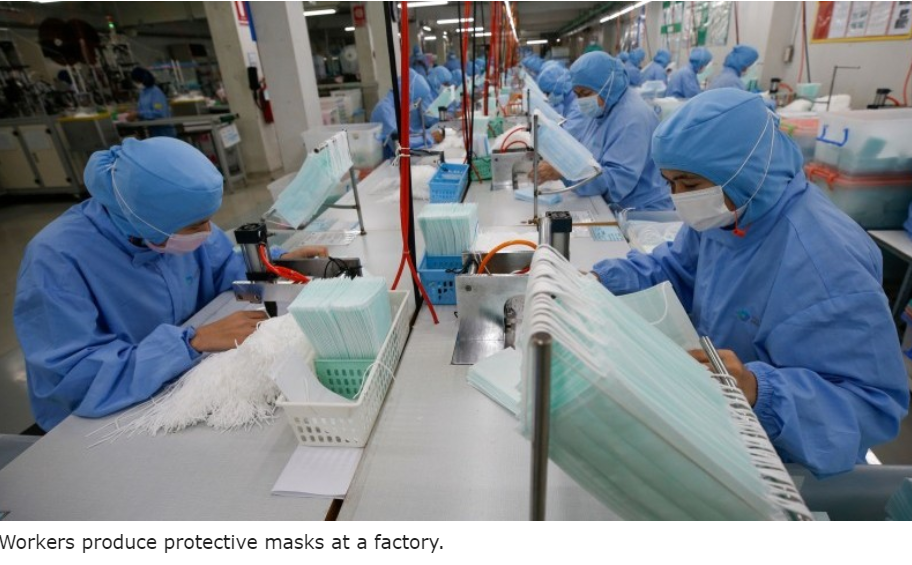Merrill har kulegravet den kinesiske udvikling gennem pandemien og striden med USA og stiller 10 spørgsmål til fremtiden. Merrill ser ikke de helt store forandringer hverken økonomisk, politisk eller geopolitisk, men banken tror, at det stadig kan betale sig for investorerne at satse på de strategiske sektorer som semiconductors, cloud computing, robotics, biotechnology
and clean energy. Der er mere usikkerhed om markedet generelt.
10 Questions on the Outlook for China
China was a relative bright spot in the global economy during the early stages of the pandemic, but it has more recently been set back by a range of economic and policy challenges. Regulatory intervention in fast-growing digital industries, rolling coronavirus flare-ups and persistent weakness in the housing market have all buffeted domestic activity in China this year, causing its equity market to underperform. Rising geopolitical stresses have only added uncertainty to the investment outlook, leading more market participants to raise concerns over China’s prospects. Here we address 10 questions that reflect our most frequently received topics of inquiry, covering China’s economy, policy actions, financial markets and international relations.
How severe is China’s economic slowdown and are conditions likely to improve this year?
Growth in China most likely troughed in April, with a 2.6% real GDP contraction recorded for the Q2 overall. The economy has since staged a moderate recovery, but the government has effectively abandoned its 5.5% target for 2022, and the current consensus projection across
76 private analysts is for full-year growth of 3.8%. This would be the slowest outside the pandemic since 1990. The latest data released for July have shown early signs of deceleration in Q3, with industrial production, retail sales and private sector credit growth all slowing down compared to June and youth unemployment rising to a record high of 20%. Official statements from Premier Li Keqiang last week expressed unease over the growth outlook, but, without large-scale policy support, the prospects for a material improvement in the second half appear limited.
How big a challenge is the property market? Can the effect on the wider economy remain contained?
The policy-tightening measures targeted at China’s Real Estate sector over the past two years have placed significant borrowing constraints on developers, with liquidity shortages forcing some firms to halt building projects entirely. New construction starts slumped by 45.4% in July from the prior year, and a growing number of homebuyers have declared boycotts on pre-sold homes until building activity resumes. Estimates for the size of China’s construction and related activity range to as high as 29% of GDP according to a recent highprofile paper from Harvard and the International Monetary Fund, and, as a result, the authorities have expressed their commitment to limiting the fallout by financing the construction and purchase of unfinished projects. But with no consensus on a coordinated response between the central government (which remains concerned about moral hazard) and local governments (which have insufficient resources) to decisively address the problem and restore confidence, housing construction and demand activity are likely to remain weak.
Will China’s zero-Covid policy be lifted anytime soon?
Having fallen below 100 at their recent trough in June, new daily coronavirus cases in China have risen again to approach 3,000, with close to half concentrated in the popular tourist destination of Hainan province. Many fewer cities are now under shutdown than at the peak of the resurgence in April, but the susceptibility of China’s homegrown vaccines to new variants and low vaccination uptake among older populations have kept the government from relaxing its zero-Covid approach. Most China analysts do not expect the policy to be abandoned at least until early next year after the conclusion of the upcoming leadership transition and the rollout of new domestic vaccines that are currently under development.
Are we likely to see any major stimulus from Beijing to revive growth?
An emphasis on longer-term stability has constrained policy support from Chinese policymakers in the key areas of real estate and economic reopening, as well as through traditional monetary policy. The central bank last week cut its one-year and seven-day lending rates unexpectedly but only by 10 basis points, with the scope for larger-scale monetary stimulus constrained by the risk of outflows as rates rise in the rest of the world. Moreover, the transmission channel for more significant monetary easing remains restricted by weak credit demand and tighter lending standards. Public support has instead focused on local government borrowing via state-owned banks to fund infrastructure investment, particularly in the digital economy and the green transition.
Is the regulatory crackdown in the technology sector finally behind us?
Last year’s surge of regulatory interventions aimed primarily at consumer internet firms was intended to address a range of strategic concerns in the areas of data security, industry competition, content moderation, financial stability and inequality. These will remain major priorities for the Chinese government. But as companies adjust to the new environment, the need for tough crackdown measures should be replaced by routine supervision. The authorities will not want to undermine the important role played by internet companies in domestic innovation and employment, particularly given the growing strategic competition with the U.S. and the structural slowdown in growth driven by productivity and demographics.
Is the forced delisting of Chinese firms from U.S. exchanges likely to go ahead?
Under the 2020 Holding Foreign Companies Accountable Act, Chinese companies that fail to comply with the reporting requirements (including financial statement audits) of the U.S. Securities and Exchange Commission (SEC) will be prohibited from maintaining their U.S.
listings from early 2024. Plans announced last week for the voluntary delisting of five stateowned enterprises by the end of August reflect Beijing’s preference for a piecemeal approach, but whether this will be acceptable to the SEC remains unclear. Companies ultimately forced off U.S. exchanges would most likely move to a primary listing in Hong Kong, where local and mainland Chinese inflows would offset liquidity lost from investors unwilling or unable to hold non-U.S listed shares.
Should we expect any significant market fallout from the recent frictions over Taiwan?
This month’s escalation in China-Taiwan tensions has understandably generated headlines, but the market implications should remain limited. For the foreseeable future, China is likely to prioritize its domestic economy over any territorial ambitions. And given its ongoing dependence on the international system, this should help reduce the risk of any major conflict given the severe economic consequences that would result.
Can we expect to see any improvement in U.S.-China relations?
China’s strategic rivalry with the U.S. for economic, technological and geopolitical leadership is likely to influence its interactions on trade, investment and diplomacy for years and even decades to come. The Biden administration has considered rolling back of some of the tariffs
imposed on China over recent years with the aim of reducing domestic inflation. But this has been tempered by China’s failure to meet its purchase requirements of U.S. exports under the 2020 Phase One agreement, particularly in light of its recent actions in Taiwan. An expected
meeting between President Xi and President Biden at the November Asia-Pacific Economic Cooperation summit in Thailand may shed more light on the state of current relations.
How important is China’s upcoming leadership transition?
The exact timing of China’s 20th Party Congress is expected to be announced later this month for either October or November. The process will appoint new members to the country’s ruling Politburo for another five-year term and is expected to return incumbent President Xi Jinping as leader for an indefinite period. The priority in the runup to the transition will be internal stability, but no major shift in economic strategy is likely at least until the next Five-Year Plan is drafted in late-2025.
What is the outlook for China’s equity market?
After a full year of persistent de-rating, China’s equity market has stabilized from its March lows but remains well below its early-2021 peak. Though inflation remains relatively low, uncertainty over the real estate market, the zero-Covid policy and the lack of any major official support are still overhangs for near-term investor sentiment. We would continue to favor strategic growth segments such as semiconductors, cloud computing, robotics, biotechnology and clean energy over the longer-term, especially from current valuations. But the broad market may struggle to trend higher until a more durable economic recovery is underway.














